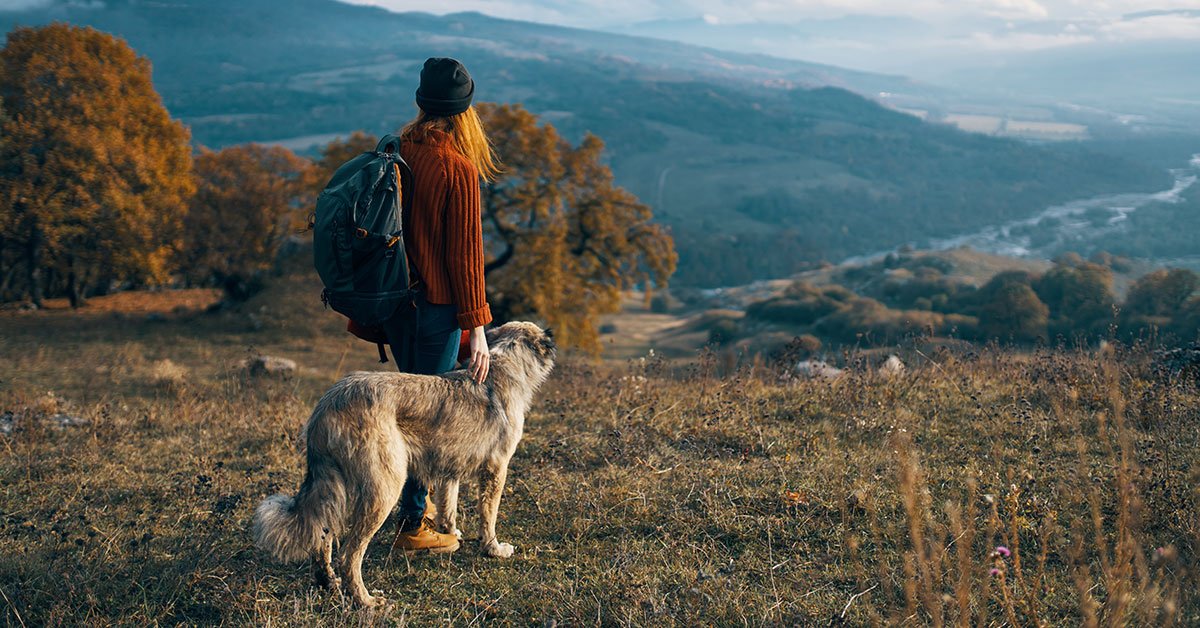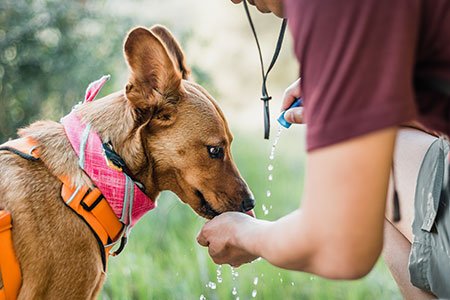Tips for Hitting the Trail With Your Dog
Hiking is an excellent way for both you and your pup to get some much needed fresh air and exercise after hibernating all winter. However, before you hit the trail, there are a few things you should do to prepare. Even if you are a seasoned hiker, your dog might not be as used to the physical demands of a hike as much as you are. Dogs also take a little more time to adapt to new situations and places. Just like you would take steps to prepare your dog for their first day at doggie daycare, you should also prepare for heading out on the trails with them as well. To ensure you and your dog have the best experience possible, follow the tips below:
Choosing a Trail
As much as you might like to think the world is your (and your dog’s) oyster, it is not. While the great outdoors seems like the kind of place where all animals are always welcome, some trails are not dog-friendly. Trails that reside within National Parks, for example, often do not allow pets, even if they are leashed. So, before you pick a trail and go, make sure you are aware of the rules and regulations.
Make Sure Your Dog is Physically Prepared
Something to also keep in mind when choosing a trail is if your dog can physically handle it. Just because they can keep up with you on a run around your neighborhood, does not mean they can keep up on a grueling hike. If this will be your dog’s first time going hiking, or even yours, you should pick something that is rated as a beginner trail. It’s also a good idea to start with short day hikes and work up to longer, overnight trips if that is something you are aiming for. This is especially the case if your dog will be carrying a pack. Take them out on little day hikes, slowly adding more weight to the pack until they seem ready to handle the full load.
Hiking With Dogs: Etiquette, Safety, and Equipment
Once you’ve chosen your trail, this will help give you an idea of what you might need to do to prepare.
Equipment for Hiking With Your Dog
If you are doing a full-day hike, the list below is made up of the essentials. If you are making an overnight trip, don’t forget to consider the sleeping arrangements and the extra amount of food and water you will need. This list is just for your dog – you will also need equipment for yourself as well.
- Pack: If your dog is small or if you are only making a short trip, a pack might not be necessary if you can carry everything in your pack. However, longer trips mean more stuff, so if your dog can handle carrying their own pack, you should get them one.
- Food and water: Make sure you have enough food and water for your pup. Consider what your dog typically eats and drinks in a day and add in snacks and additional water.
- Food and water container: You’ll want to bring something to put their food and water as well. Look for collapsable bowls that are lightweight and easy to pack.
- First aid kit: You can find pet first-aid kits available at most pet stores. If you are doing a short hike, you can probably skip it, but make sure to have one for a full-day hike or longer.
- Booties: These are essential for protecting sensitive dog paws. If the terrain is rough and you will be hiking for several hours or more, your dog’s pads can easily get cut or worn down.
- Towel: A towel is good to have in case your dog gets wet or muddy. Use something lightweight and fast-drying, like a microfiber.
- Coat: A coat is good to have for your dog in case it gets cold at night.
- Collar and harness: You should have a collar and harness for your dog that are lightweight, breathable, and moisture-wicking.
- Safety light: Small safety lights that you can clip to your dog’s collar are great for keeping tabs on them when the sun goes down. They are also useful for alerting other hikers of your dog’s presence.
- Brush: A brush or a comb will be useful for removing any burs that get stuck in your dog’s fur.
- Rope: Having rope isn’t entirely necessary but can be useful if you need to tie your dog up to free up your hands for any reason.
- Poop bags: Dog waste bags are a must. It is considered rude and can be harmful to wildlife if you leave your pet’s waste behind.
Dog Leash Laws, Obedience, and Behavior on the Trails
Most trails, even if they are dog friendly, will require your dog to be on a leash. This ensures they stay on the path and out of danger. Even if your dog is leashed the entire time, do not assume that will make keeping a handle on them more manageable. If your dog is not trained and is in a completely new environment, they could be hard to maintain control of. It is essential to have an obedient dog when hiking on trails.
Leave No Trace: Pick Up After Yourself and Your Dog
Be kind, and don’t leave anything behind. The reason some parks don’t allow pets is because having them there could disrupt the ecosystem. Even on trails that are dog friendly, you should still be considerate and pick up after your pet.
Trail Hazards: What to Look Out For
- Physical Exhaustion: If your dog is showing signs of fatigue, take a break. Give them plenty of water and check their paws for signs of wear if they don’t have booties on.
- Wildlife: Keep an eye out for wildlife. Do not leave your dog unattended and check their fur for ticks.
- Plants: Do not let your dog eat any of the wild plant life. Some things could upset their digestive system or even poison them.
- Water: Try not to let your dog drink directly from streams, rivers, or lakes. They are susceptible to most of the same pathogens that humans are. If you don’t have fresh water on you, make sure to bring something to treat the natural water.
Safe Journey Dog Boarding
At Safe Journey Dog Boarding, we strive to provide the best service possible for both you and your dog. Our cage-free facility allows dogs to roam free, just like they would at home in a stress-free environment. If your dog is feeling cooped up and needs a little extra socialization and exercise, bring them in for doggy daycare. The friendly staff at Safe Journey Dog Boarding in Portland, OR, are happy to give your dog the love and care they need.


